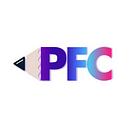What Is Lead Nurturing, and How Do You Do It? — People First Content
If you’re using inbound marketing, you know it’s all about the leads. Leads turn into prospects, prospects turn into customers, customers turn into fans, and your business grows.
Of course, we all know it’s not that simple.
Something has to happen between the steps of someone becoming a lead (i.e., someone interested in your product or service) and a prospect (i.e., a lead who engages with you in some way, indicating their intent to buy something).
That missing step is lead nurturing. This article will talk about what lead nurturing is, why it matters, and how you can implement it into your workflow.
What is Lead Nurturing?
First things first. What the heck is lead nurturing?
Lead nurturing refers to the act of growing and reinforcing your relationship with people who might become customers (i.e., your leads). It’s the next step after lead generation.
You probably intuitively know that lead nurturing is important to your business. But, if you’re like many company leaders, you might not be proactively implementing lead nurturing into your process. found that 60% of companies would rate their lead nurturing programs as “failing.”
Not to worry. I’ll offer some ideas to build lead nurturing into your sales and marketing process in a minute.
And if you’re unsure of what lead generation is, we’ve got you covered .
Why Does Lead Nurturing Matter?
Repeat this with me: Lead nurturing leads to sales.
Nurturing leads keeps potential customers in your orbit, so they’re reminded of your company and its products/services at opportune times.
Most leads aren’t prepared to buy form you when they first learn about your company. In fact, it takes 51% of leads five or more touches before they turn into a prospect.
So, rather than spending all your time on people who have never heard of your brand, you can focus on engaging and informing those who have shown some interest. This can lead to 20 percent more sales than not having a lead nurturing strategy.
By nurturing your relationships with leads, you ensure that your company is top of mind when it’s time for them to buy.
What Are Some Lead Nurturing Strategies?
You don’t need to need to limit yourself to only one lead nurturing strategy. Taking an omnichannel approach to lead nurturing can ensure that you reach your leads at the right place and time.
Lead Nurturing Strategy 1: Personalized email
Email continues to be a powerful tool for marketers in all stages of the buying journey. In addition to sending newsletters and check-in emails, consider sending emails after people take particular actions, such as downloading your lead magnet or putting something in their cart. Read more about how to get started with email marketing .
Lead Nurturing Strategy 2: Produce educational content
Use your social media channels, emails, and blog to inform leads, not sell to them. Keep them updated on industry changes or give them actionable steps to solve a specific problem. If you can become a go-to source of information for leads, you’ll be the first brand they think of when they’re ready to buy.
Lead Nurturing Strategy 3: Provide more in-depth content
Blogs and social media posts are great for delivering high-level information to leads. However, when you want to take a deeper dive into a topic, it’s time for a lead magnet.
A lead magnet is downloadable content that offers a more in-depth look at a particular topic. It’s often gated content , which allows you to reach out to anyone who downloaded it so you can learn more about their needs and how your company can help. Not sure where to start? Here are our top 10 ideas for lead magnets .
What’s The Most Important Part of Lead Nurturing? (Spoiler: It’s Great Content)
As you can see from the above examples, quality content is the foundation of a great lead nurturing campaign. Whether you need help writing emails, social media posts, blog posts, articles, white papers, eBooks, or anything else, People First Content is here for you!
Click here to get started.
Originally published at https://www.peoplefirstcontent.com on April 3, 2022.
